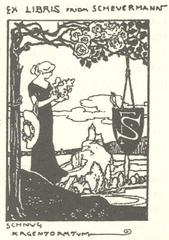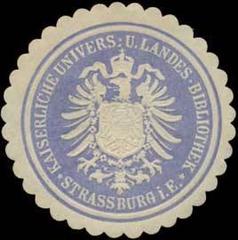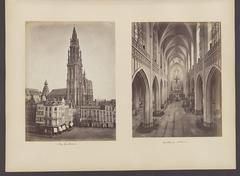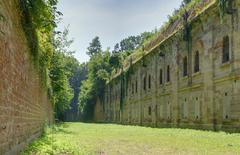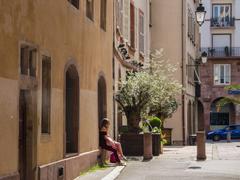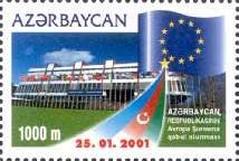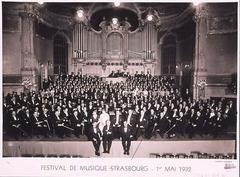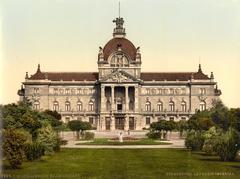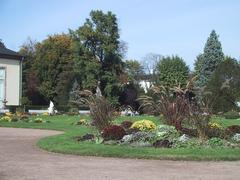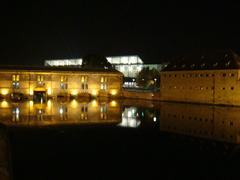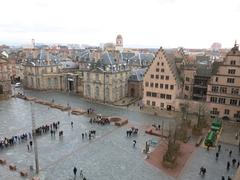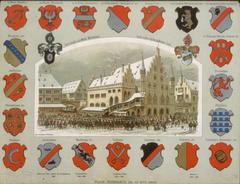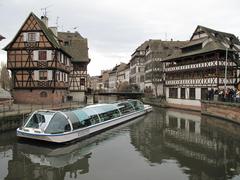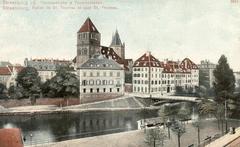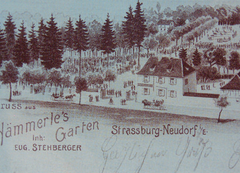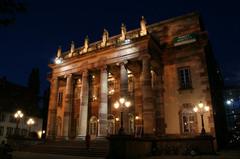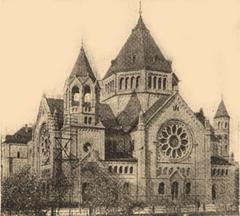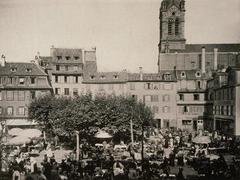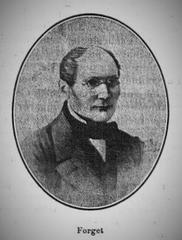Musée Historique De Strasbourg Visiting Hours, Tickets, and Historical Sites in Strasbourg
Date: 16/08/2024
Introduction
Nestled in the enchanting city of Strasbourg, France, the Musée Historique De Strasbourg offers an immersive journey through the city’s rich and diverse history. Established in 1920 and housed in the historic Grande Boucherie, a Renaissance building constructed in the late 16th century, the museum stands as a testament to Strasbourg’s unique cultural heritage and historical significance (Wikipedia). The museum’s extensive collection, which includes medieval armor, Renaissance paintings, and artifacts from the French Revolution, provides a comprehensive narrative of Strasbourg’s past, from its medieval origins to its modern-day status as a European capital (Visit Alsace). Whether you’re a history enthusiast or a casual visitor, the Musée Historique De Strasbourg offers a captivating experience that brings the city’s history to life through its engaging exhibits and interactive displays. This guide will provide you with all the essential information, including visiting hours, ticket prices, and tips for making the most of your visit, ensuring a memorable and informative experience at one of Strasbourg’s most significant historical sites.
Table of Contents
- Introduction
- Origins and Early History
- Establishment of the Museum
- Collection and Exhibits
- World War II and Post-War Period
- Modern Developments
- Significance of the Museum
- Visitor Tips
- Notable Exhibits
- Nearby Attractions
- FAQ
- Conclusion
Exploring the Musée Historique De Strasbourg: History, Tickets, and Visitor Tips
Introduction
Nestled in the heart of Strasbourg, France, the Musée Historique De Strasbourg offers a captivating journey through the city’s rich and complex history. Housed in the historic Grande Boucherie, this museum is not only a treasure trove of artifacts but also a testament to Strasbourg’s unique cultural heritage. Whether you’re a history enthusiast or a casual visitor, this guide will provide you with all the information you need to make the most of your visit.
Origins and Early History
The Musée Historique De Strasbourg is housed in the former Grande Boucherie, the city’s historic slaughterhouse constructed in 1587. This building is a significant example of Renaissance architecture in Strasbourg. The Grande Boucherie served its original purpose until the 19th century, after which it was repurposed for various uses before becoming a museum.
Establishment of the Museum
The Musée Historique De Strasbourg was officially established in 1920. Its creation was part of a broader effort to preserve and showcase the rich history of Strasbourg, a city with a unique cultural and political heritage due to its strategic location on the border between France and Germany. The museum’s founding aimed to provide a comprehensive narrative of Strasbourg’s past, from its medieval origins to its modern-day status as a European capital.
Collection and Exhibits
The museum’s collection is extensive and diverse, encompassing artifacts, documents, and artworks that illustrate the city’s history. Key exhibits include medieval armor, Renaissance paintings, and artifacts from the French Revolution. One of the museum’s highlights is the detailed scale model of Strasbourg in the 1720s, offering a fascinating glimpse into the city’s layout and architecture during that period.
World War II and Post-War Period
During World War II, Strasbourg was annexed by Nazi Germany, and the museum’s collection faced significant threats. Many artifacts were hidden or relocated to protect them from potential damage or looting. After the war, the museum underwent extensive restoration and reorganization to repair the damage and update its exhibits to reflect the city’s more recent history.
Modern Developments
In recent years, the Musée Historique De Strasbourg has undergone several renovations to enhance the visitor experience. These updates include modernized exhibit spaces, interactive displays, and improved accessibility. The museum continues to expand its collection, incorporating contemporary artifacts and multimedia presentations to provide a dynamic and engaging exploration of Strasbourg’s history.
Significance of the Museum
The Musée Historique De Strasbourg plays a crucial role in preserving and interpreting the city’s rich heritage. It serves as an educational resource for both locals and tourists, offering insights into the historical events and cultural developments that have shaped Strasbourg. The museum’s location in the historic Grande Boucherie building further enhances its significance, providing a tangible connection to the city’s past.
Visitor Tips
- Location and Accessibility: The museum is centrally located near the Strasbourg Cathedral, making it easily accessible by foot or public transportation. The address is 2 Rue du Vieux-Marché-aux-Poissons, 67000 Strasbourg, France.
- Opening Hours: The museum is typically open from Tuesday to Sunday, 10:00 AM to 6:00 PM. It is closed on Mondays and certain public holidays. It’s advisable to check the museum’s official website for any changes in opening hours.
- Admission Fees: General admission fees are reasonable, with discounts available for students, seniors, and groups. Children under 18 often enjoy free entry. The museum also offers free admission on the first Sunday of each month.
- Guided Tours and Educational Programs: The museum offers guided tours and educational programs for visitors of all ages. These tours provide deeper insights into the exhibits and the history of Strasbourg. It’s recommended to book these tours in advance.
- Facilities: The museum is equipped with modern facilities, including a gift shop, a café, and restrooms. It is also wheelchair accessible, with elevators and ramps available for visitors with mobility issues.
- Photography: Photography is generally allowed in the museum, but the use of flash and tripods may be restricted. Visitors are encouraged to check the museum’s photography policy upon arrival.
Notable Exhibits
- Medieval and Renaissance Artifacts: The museum’s collection includes a wide range of medieval and Renaissance artifacts, such as weapons, armor, and everyday objects. These items provide a glimpse into the daily life and culture of Strasbourg during these periods.
- French Revolution: The museum features a significant collection of artifacts from the French Revolution, highlighting Strasbourg’s role in this pivotal historical event. Exhibits include documents, uniforms, and personal items from key figures of the revolution.
- Scale Model of Strasbourg: One of the museum’s most popular exhibits is the detailed scale model of Strasbourg in the 1720s. This model offers a unique perspective on the city’s historical layout and architecture, allowing visitors to visualize how Strasbourg has evolved over the centuries.
- Interactive Displays: The museum has incorporated interactive displays and multimedia presentations to enhance the visitor experience. These exhibits provide engaging and informative content, making the history of Strasbourg accessible to a wide audience.
Nearby Attractions
- Strasbourg Cathedral: Located just a short walk from the museum, the Strasbourg Cathedral is a must-visit landmark. This stunning example of Gothic architecture offers breathtaking views from its bell tower and houses an impressive astronomical clock.
- La Petite France: This picturesque neighborhood is known for its charming half-timbered houses and scenic canals. It’s a great place to explore before or after visiting the museum.
- Palais Rohan: Another nearby attraction, the Palais Rohan, is home to three museums: the Museum of Fine Arts, the Archaeological Museum, and the Museum of Decorative Arts. It’s an excellent destination for those interested in art and history.
FAQ
Q1: What are the Musée Historique De Strasbourg visiting hours? A1: The museum is typically open from Tuesday to Sunday, 10:00 AM to 6:00 PM. It is closed on Mondays and certain public holidays. Always check the museum’s official website for any changes in opening hours.
Q2: How much are the Musée Historique De Strasbourg tickets? A2: General admission fees are reasonable, with discounts available for students, seniors, and groups. Children under 18 often enjoy free entry. The museum also offers free admission on the first Sunday of each month.
Q3: Is the Musée Historique De Strasbourg accessible for visitors with disabilities? A3: Yes, the museum is wheelchair accessible, with elevators and ramps available for visitors with mobility issues.
Q4: Are guided tours available at the Musée Historique De Strasbourg? A4: Yes, the museum offers guided tours and educational programs for visitors of all ages. It’s recommended to book these tours in advance.
Q5: Can I take photographs inside the Musée Historique De Strasbourg? A5: Photography is generally allowed in the museum, but the use of flash and tripods may be restricted. Visitors are encouraged to check the museum’s photography policy upon arrival.
Conclusion
The Musée Historique De Strasbourg is a vital institution for understanding the rich and complex history of Strasbourg. Its extensive collection, engaging exhibits, and historic setting make it a must-visit destination for anyone interested in the cultural heritage of this remarkable city. Whether you’re a history enthusiast or a casual visitor, the museum offers a fascinating journey through the centuries, providing valuable insights into the events and people that have shaped Strasbourg. Plan your visit today and immerse yourself in the captivating history of this European gem.
References
- Wikipedia. (n.d.). Musée historique de Strasbourg. https://en.wikipedia.org/wiki/Musée_historique_de_Strasbourg
- Visit Alsace. (n.d.). Historical Museum. https://www.visit.alsace/en/223013436-historical-museum/
- Strasbourg Museums. (n.d.). Historical Museum. https://en.musees.strasbourg.eu/historical-museum
- Live the World. (n.d.). 3 Days in Strasbourg, France. https://www.livetheworld.com/post/3-days-in-strasbourg-france
